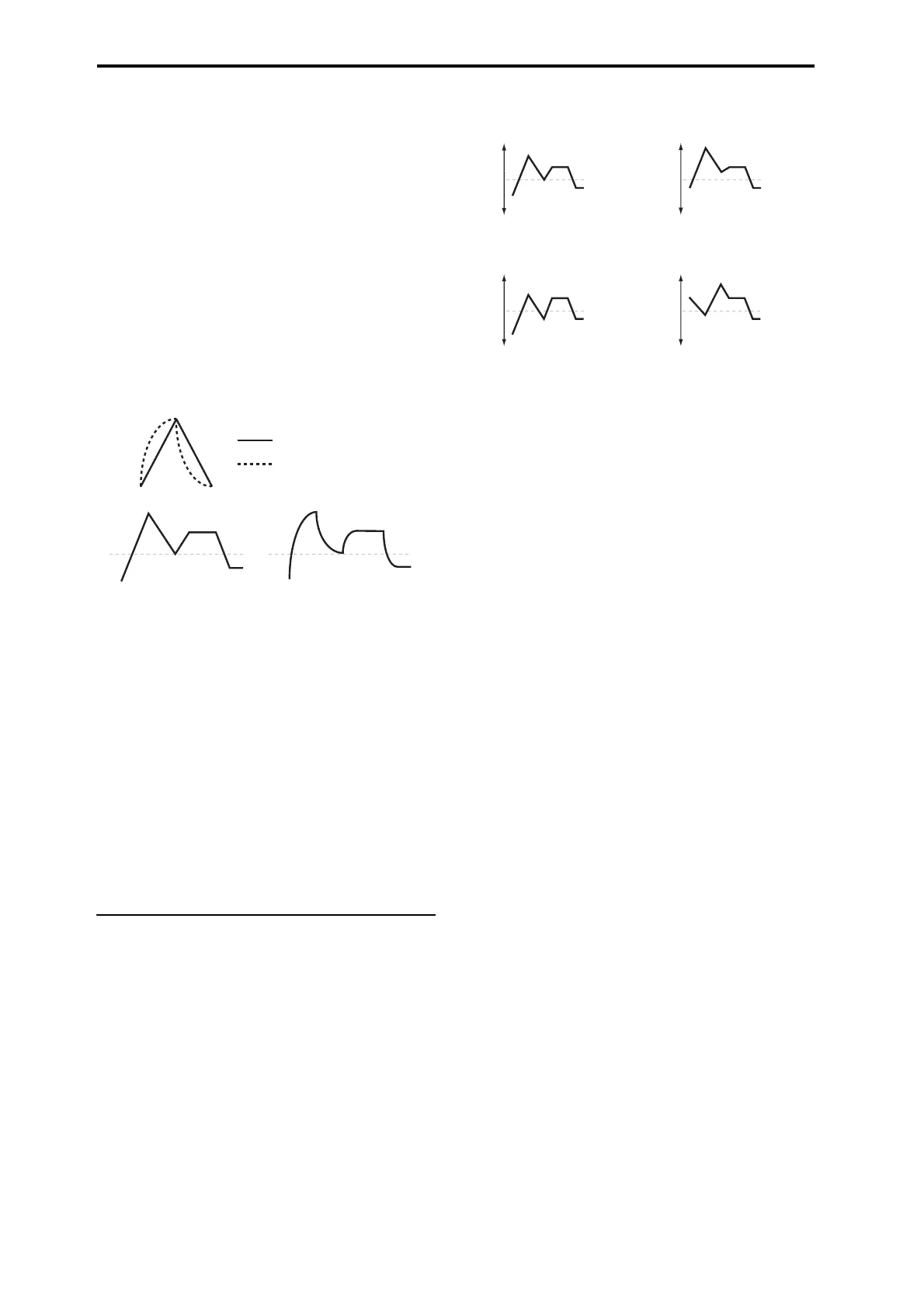EXi: MOD-7 Waveshaping VPM Synthesizer
342
Classic analog synth envelopes made these curved shapes
naturally. The NAUTILUS goes a step further than vintage
synths, however, and lets you control the amount of
curvature separately for each of the four envelope segments.
When you change the curvature, the EG times remain the
same. However, greater curvature will tend to sound faster,
because the value changes more quickly at the beginning.
Different curve settings for up and down
You may find that different amounts of curvature are suitable
for segments which go up and segments which go down.
For instance, a curve of 3 is a good default setting for
upward segments, such as Attack. On the other hand, a curve
of 6 or more is good for downward segments, such as Decay
and Release.
EG Curve
Attack [0 (Linear), 1…9, 10 (Exp/Log)]
This sets the curvature of the Attack segment - the transition
from the Start level to the Attack level.
Decay [0 (Linear), 1…9, 10 (Exp/Log)]
This sets the curvature of the Decay segment - the transition
from the Attack level to the Break level.
Slope [0 (Linear), 1…9, 10 (Exp/Log)]
This sets the curvature of the Slope segment - the transition
from the Break level to the Sustain level.
Release [0 (Linear), 1…9, 10 (Exp/Log)]
This sets the curvature of the Release segment - the
transition from the Sustain level to the Release level.
8–1c: Level Modulation
These settings let you use an AMS source to control the
Level parameters of the EG. The Start, Attack, Break, and
Sustain levels share a single AMS source, but each has its
own modulation intensity.
By using different settings for each of the four levels, you
can cause both subtle and dramatic changes to the EG shape,
as shown below.
EG Level Modulation
Once an EG segment begins, it can’t be
modulated
Once the EG has started a segment between two points, that
segment can no longer be modulated. This includes both the
time of the segment, and the level reached at the end of the
segment.
For instance, if the EG is in the middle of the Decay time,
you can no longer modulate either the Decay time or the
Break level.
As another example, let’s say that you’ve assigned the
Common LFO to modulate Break Level. The LFO may be
moving all the time, but the Break Level is only affected by
the LFO’s value at the instant that the Decay segment starts.
After that, the level is fixed.
Finally, this also means that modulating the Start level,
Attack level, or Attack time will not affect notes that are
already sounding, unless the EG is then reset via AMS.
AMS [List of AMS Sources]
This selects an AMS source to control the EG’s Level
parameters.
For a list of AMS sources, see “Alternate Modulation Source
(AMS) List” on page 901.
Start [–99…+99]
This controls the depth and direction of the AMS modulation
for the Start level.
For example, if you set the AMS source to Velocity and set
Start to +99, the Start level will increase as you play harder.
If you instead set Start to –99, the Start level will decrease as
you play harder.
Attack [–99…+99]
This controls the depth and direction of the AMS modulation
for the Attack level.
Break [–99…+99]
This controls the depth and direction of the AMS modulation
for the Break level.
Sustain [–99…+99]
This controls the depth and direction of the AMS modulation
for the Sustain level.
Curve = 0 (Linear)
Curve = 0 (Linear)
Curve = 10 (Exp/Log)
Curve = 10 (Exp/Log)
Original Shape
Positive AMS on Start and Break,
Negative AMS on Attack
Negative AMS on Start,
Attack, and Break
Positive AMS on Start,
Attack, and Break

